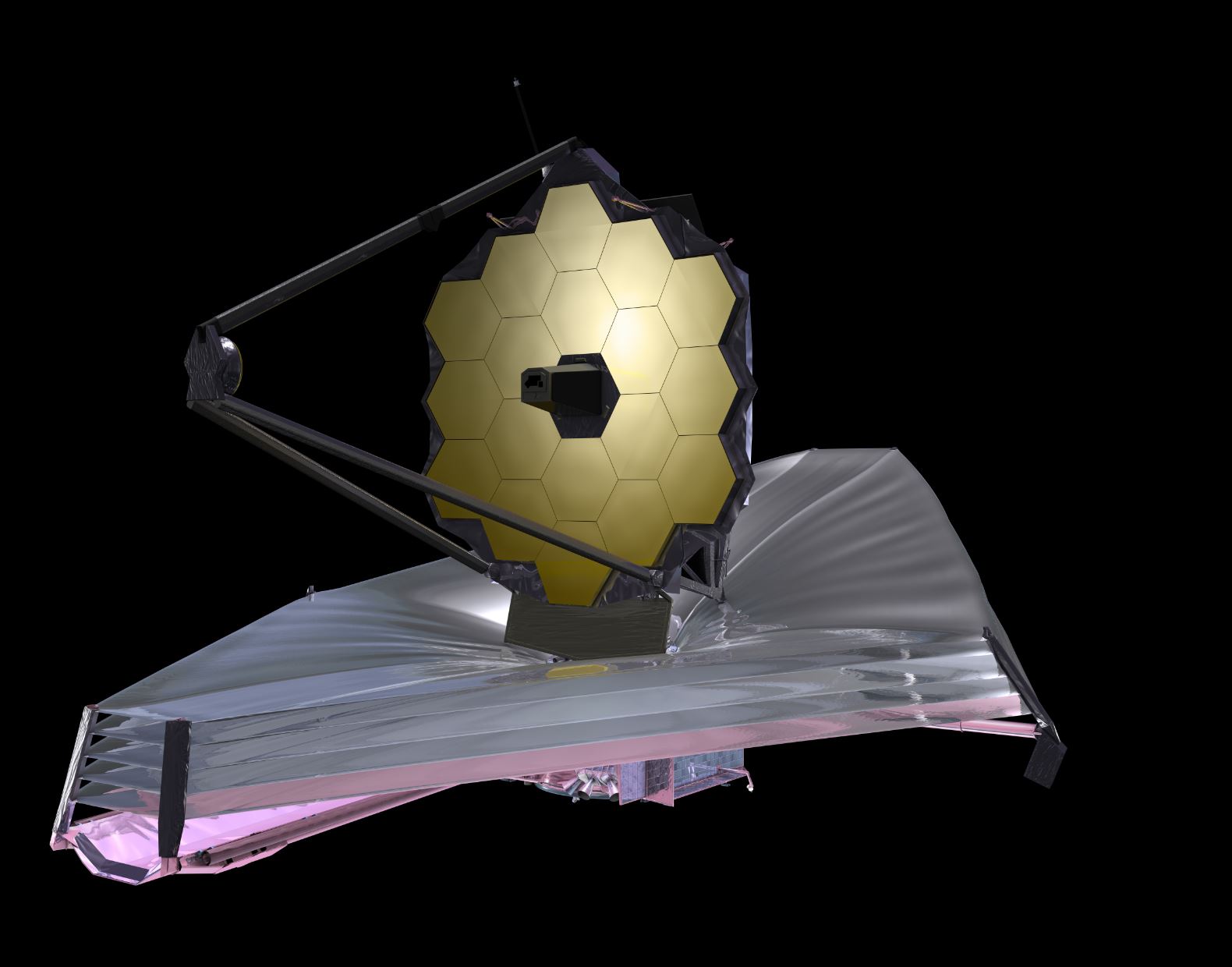Subject: James Webb Space Telescope development - Comments and suggestions are welcome! Don't hesitate and leave a comment on our comment section down below the article!
By Universal-Sci
The suspended telescope section as it is being aligned with the spacecraft element. - Image Credit: NASA/Chris Gunn - HDR tune by Universal-Sci
The James Webb Space Telescope (JWST) is planned to replace the Hubble Space Telescope. It will feature significant improvements in terms of resolution and is named after former NASA chairman James Webb.
According to a NASA report, last week the JWST was fully assembled for the first time by combining two halves that were prepared previously. Now that the telescope has been constructed entirely, the next phase of testing can commence.
The development of the JWST has not been without problems. The initial plan was for it to be launched somewhere in October 2018. Later on, NASA announced that the launch had been delayed until the spring of 2019 as the assembly of several components took more time than expected. On the 27th of March 2018, the launch was delayed once more, this time to May 2020. Currently, the spacecraft is scheduled to be launched in 2021 although all bets are off with regards to this date being realistic. In our opinion, it is better to have it done well than have it done quickly. We expect the final results to be amazing, and we would rather wait to ensure its best prospect for success.
An artist’s impression of the JWST with its components deployed - Image Credit: NASA via Wikimedia Commons
According to Bill Ochs, the Webb project manager for NASA Godard Space flight Center in Greenbelt, the assembly of the telescope and all of its components into one observatory was an incredible achievement. He is talking about a milestone for NASA, ESA, and CSA and the other involved partners.
Last week technicians have combined both telescope halves by the use of a crane. The telescope element, including the optical and scientific instruments, was hoisted above the spacecraft portion, after which they slowly brought it into position for precise alignment. After this nerve-racking process, the observatory was mechanically connected for the first time. The observatory is now mechanically connected. According to NASA, the next steps will be to electronically connect both halves and sequentially test those connections.
After the completion of those tests, engineers will be fully deploying the five-layer sun shield that has been designed to protect its mirrors and scientific instruments from light from the sun and its reflections from the Earth and moon. The capability to deploy the sunshield to its correct shape is vital.
Both of the telescope’s major components have been previously tested individually through scenarios that would be encountered during its launch. Similar tests will be done now that the observatory has been assembled completely.
The giant sunshield for the James Webb Space Telescope seen in perspective - Image Credit: Chris Gunn - NASA Goddard Space Flight Center via Wikimedia Commons
Like previously mentioned, the telescope is now scheduled for launch in 2021. The final goal will be its deployment in the neighborhood of Lagrangian point 2 (commonly known as L2), roughly 1,500,000 kilometers beyond Earth's orbit. The benefit being a stable orbit around the sun in sync with the Earth. However, at that enormous distance, it will be almost impossible to repair the telescope if something goes wrong. It is therefore vital that preparations are done precisely and without any significant errors.
We are very excited about the James Webb Space Telescope and can't wait for it to be operational as the image quality is expected to be brilliant, and it might be capable of direct imaging exoplanets!
If you are interested in the project, be sure to check out NASA's dedicated Jame Webb Space Telescope website to read more about the development and the telescope's features.
Sources and further reading: NASA press release
If you enjoy our selection of content please consider following Universal-Sci on social media:











